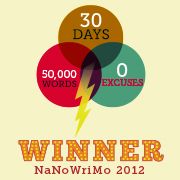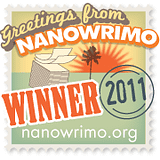Welcome to my weekly series “Designing from Bones”, using archaeology and the artifacts of human history to find and design stories. Last week we looked at Otzi for ways to discover plot ideas through occupation. Today we will be searching through a vast swamp to find communities and the stories they are sure to hold.
The Great Dismal Swamp
Yes, this is a real name and place. For those of you not familiar, The Great Dismal Swamp covers parts of Southeast Virginia of Northeast North Carolina. During the 1600’s to late 1800’s this was a favorite hiding location for escaped slaves and fugitives, saw a major canal expansion requiring an army of forced labor to live in the swamp. During the slave era law enforcement and other entities regularly raided the depths of the swamp in their attempts to reclaim slaves and capture criminals.
Each of these activities required a community and settlement in one form or another. Let’s explore three of these communities and see what story potential each holds.
On the swamps shores
Two primary reasons to live along the borders of any swamp are as support for groups venturing into the swamp or to avoid the influence of a government by living in a remote or undesirable location. Both can act as backdrops for compelling drama.
A child, spouse or other important individual could become lost in the swamp and require finding (a basic lost and found story).
Several genres, such as fantasy and adventure can use this setting to launch a quest to find a needed object or person deep within the swamp. Perhaps a predator stalks the inhabitants of the community making it necessary to for a hero to hunt and save the village. What if that same predator was a tax collector from the government? Or a bounty hunter?
Romantic urges? How about a swamp maiden or man, a vision appearing as a will-o-wisp that calls out to yearning hearts, for good or ill or perhaps to solve a mystery that will release it from an ancient or magical bondage?
Add alien creatures on Earth or another world and we have the basis for a fun science fiction story.
These communities are rural, in contact with civilization but not generally supported by it, with hardy villagers and unprepared visitors. As fewer and fewer people seem to understand the dangers and harsh realities of the wilderness this type of environment immediately thrills and raises the stakes of survival with a reader. How many think they could survive in an unknown swamp?
Canal Life and the Dismal Swamp Hotel
The Great Dismal Swamp Canal is 22 miles long and constructed over a 12 year period from 1793 to 1805. During this time small support communities were built for the workers, a mixture of slave labor (some working to buy their freedom), free African-Americans and European outcasts (i.e. criminals). Imagine that mixture and stories from any of the preceding view points or as a dissection from the view of a “outsider” unfamiliar with these communities, experiencing the hardships of the work force come to mind.
Another interesting location along the canal was called the Dismal Swamp Hotel. This building was set directly on the border between Virginia and North Carolina. Love trysts occurred here regularly as did duels where shooting someone across the state line made it difficult to prosecute.
Imagine this as a small border village and psychological thriller, spy-type stories and romances fraught with danger leap to mind. This location can also be added into the ideas given in the first section, making it a colorful location for a stories First Plot Point or Midpoint (or in the case of the hotel even a Climax).
Whether a person travels or lives along the canal and its communities by choice or need or necessity, each opens up a large selection of story arcs, giving the writer full control to develop the story as they see fit.
Deep swamp sanctuary
During the 1700’s to around 1860 the swamp became the home of thousands of “maroons”, escaped slaves that combined with the indigenous peoples of the swamp to form communities hidden throughout its vast domain (200 square miles at the time). These communities necessitated a degree of isolation from the outside for protection and were often host to paranoia and xenophobia.
Our hero could be a slave, trying to find such a community in the depths of the swamp or a new arrival having to adjust to the harsh conditions.
This is a prime location for the start of a Dystopia; isolated, insulated, with danger penning in the community from exterior contact. Could this be a lost tribe? How about a society cut off and unaware the rest of society died in a war (futuristic) or that the rest of society has advanced without their notice (any era, past to modern but always out of touch with the greater reality).
Are the people living here human or magical (science fiction and fantasy)? Why have they sought isolation? By choice? To hide a dark secret power? To safeguard a relic that entraps a great evil?
The swamp holds many secrets that cry out for the adventurous writer to breathe into life. Ready to do some gator hunting?
What interesting locations have you found in your research or travels that would make great story settings? If you used one, how? See anything in the swamp that sparks an idea, share it in the comments. I’d love to hear from you!
Interested in more on the Great Dismal Swamp? Science Daily has an excellent story on its history and current exploration efforts.
Looking for more great ideas and information on writing? Check out my previous “Designing from Bones” entries and the excellent bloggers featured on my Blog Roll. Want to know how to make blogging and social media a powerful tool? Try Kristen Lamb author of We Are Not Alone—The Writer’s Guide to Social Media & Are you there blog? It’s me, Writer
Peaceful Journeys!











Swamps are definitely fertile settings for stories.
I have something for you at my blog. Stop by when you have the chance. 😀
Hi Sonia!
Oh yeah, love swamps, marshes and bogs. I’ll be sure to stop in today.
Thanks for the comment 🙂
Love that first image!
Hi Mary Jo!
Love it as well, great piece of art!
Thanks for the comment 🙂
Very interesting post. A swamp can generate stories for a lot of genres. And it has flexibility for world setting rules.
Thanks for the info 🙂
Hi Irene!
I have a love for out of the way spots and difficult locations, sure the plains are nice but a hostile mountain range or malaria infested swamp just call out “Drama here!”
Thanks for the comment 🙂
Now I’m on to you! The plan about crushing my dreams of being a wilderness guide was a ruse so you could secretly take over and lead people on your own wilderness tours. And swamps?! Touche’, sir! Spooky and full of animals with razor sharp teeth. How very “Lake Placid” of you. Game on, Lempp! Game on! 😉
Indubitably my dear Witkins, indubitably! Always room for more in the swamp, a nice chardonnay, an industrial size can of bug repellent, a hiking buddy to distract the gators and you’re all set 🙂
“Lake Placid” is one of the best movies of all times, especially Betty Whites’ character, the cow with the hankie blindfold was a comedy treasure.
Setting, especially if unfamiliar to the writer, can get light treatment in favor of other issues. Big mistake. Every setting (and time frame) has something to offer to a character, whether it’s language, residency, origin, or skill set for survival. For me, setting details are part of the character details. Everybody is from somewhere and did something there, before, during and after the story. How your characters regard all of that is a great way to allow the reader into the character’s life.
Great post!
Could not agree more John. Yes, all stories are about characters, but those characters have to be somewhere. That “somewhere”, aka. setting, offers plot options, determines reactions, etc. How one responds in a swamp is very different from how one would respond on the plains, on a mountainside or in a boat at sea.
Thanks for the comment 🙂
Pingback: Sunken Tomb Empowered « Gene Lempp's Blog
OMyGoodness you have got me completely sucked into this series. Started at the Tomb, backed up to the Swamp, now I have to go backwards to Otzi.
I’m kind of hating you right now Gene Lempp. I have no time… NO TIME! … for this!
Gotta go read now…
BTW.. there is quite the fertile eradicated haunted swamp in NOLA, where Le Pavilion sits now. It’s the hotel’s claim to fame for its hauntings….
Now back to reading.
Wow, so glad you are enjoying the series! I’ll be finishing up this grouping next week so reading Otzi and the Watchtowers is an excellent idea.
Le Pavilion sounds fun, I’ll be looking into it for a future series grouping…meaning research, love it 🙂